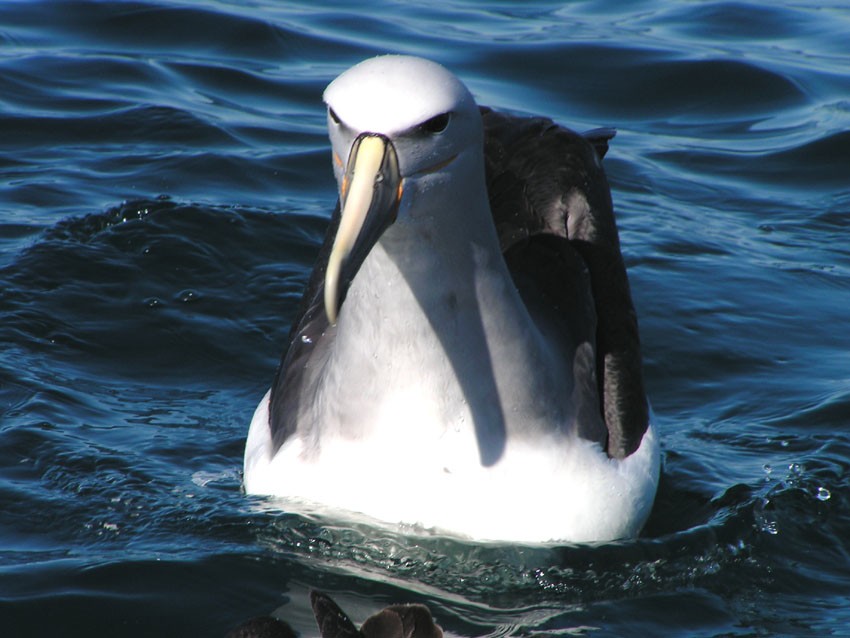Salvin's Albatross
A species of Mollymawks, Also known as Salvin's Mollymawk Scientific name : Thalassarche salvini Genus : Mollymawks
Salvin's Albatross, A species of Mollymawks
Also known as:
Salvin's Mollymawk
Botanical name: Thalassarche salvini
Genus: Mollymawks
Content
Description General Info
Description
The Salvin's albatross is about 90 cm (35 in) and 2.56 m (8.4 ft) across the wings. It weighs 3.3–4.9 kg (7.3–10.8 lb) and is, alongside the shy albatross, the largest of the mollymawk or small albatross group. The adult bird has a silver-grey crown. Its face, upper throat, and upper mantle are grey, and its back, upperwing, and tail are grey-black. It has a white rump and underparts with a black thumbmark on underwing and black narrow leading and trailing edges on the wing and black wing tips. Its bill is pale grey-green with a pale yellow upper ridge, and a bright yellow tip on the upper mandible, and a dark spot on the tip of the lower mandible. The juveniles have more extensive grey areas and a blue-grey bill with black tips on both mandibles. It can be distinguished from the Chatham albatross by its larger size and grey bill, and from the shy albatross by the greyer head. Such differences can be difficult to pick out at sea, however, and this explains the under-representation of this species in at-sea surveys. 
Size
90 cm
Life Expectancy
40 years
Nest Placement
Cliff
Feeding Habits
Salvin's Albatross predominantly feeds on squid and fish, caught using surface-seizing and shallow-diving techniques. Salvin's Albatross showcases unique adaptation to local prey availability, indicating flexible foraging strategies within its marine habitat.
Habitat
Salvin's Albatross inhabit marine environments, typically less pelagic compared to other albatross species, and are often found over continental shelves, and may venture inshore. They breed on remote islands, utilizing barren slopes or flat terrains for nesting. Salvin's Albatross's range spans the Southern Ocean, with breeding occurring on select islands near New Zealand and in the Indian Ocean. At sea, their range extends from South Africa to Australia and up to the coast of South America.
Dite type
Piscivorous
General Info
Feeding Habits
Bird food type
Species Status
The IUCN classifies this species as vulnerable with longline fisheries and trawlers responsible for small numbers of deaths, although trawlers are responsible for more than half of those killed. The world population is currently estimated to be around 61,500 birds in 1998, which suggests a decline in the species since earlier studies (although differences in methods make direct comparisons difficult). There are 30,750 pairs, in 1998, on the Bounty Islands, compared to 76,000 pairs in 1978. There were 650 pairs on the Snares Islands, and 4 pairs were recorded on Île des Pingouins in the Crozet Islands. Single chicks have been observed on The Pyramid and Forty-fours Island in 2007. Bird banding and studies are underway, and all of the islands except for The Pyramid, and Forty-fours Island, which are privately owned, are nature preserves. In 1998, the Snares Islands and Bounty Islands were declared World Heritage Sites, and in 2006, the Western and Central Pacific Fisheries Commission adopted a measure to require bird bycatch mitigation measures south of 30°S. 
Scientific Classification
Phylum
Chordates Class
Birds Order
Albatrosses and Petrels Family
Albatrosses Genus
Mollymawks Species
Salvin's Albatross 